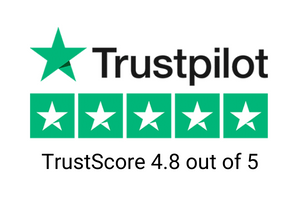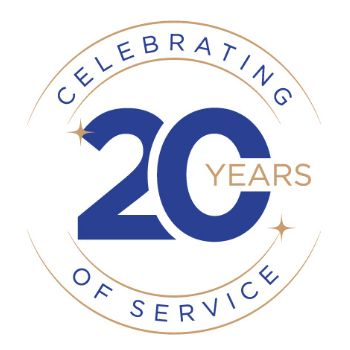
Disclaimer: We are not qualified legal or tax professionals and are not giving advice. Always speak with a qualified professional before making any legal or financial decisions.
The average California family owes $9,096 in credit card debt in 2025. That's $1,568 more than the national average. Why so much debt? California costs too much to live in.
The Numbers Tell the Story. Home prices in California average $786,107. That's twice what homes cost in other states. Rent costs $2,627 per month on average. Many families use credit cards to buy groceries and pay bills because their paychecks don't cover everything.
The result? California led the nation in bankruptcies in 2024, with 47,621 individuals filing, more than any other state. This shows how serious the debt crisis has become.
If you have too much debt or want help with your bills, this guide shows California residents how to get out of debt.
Don't want to read through? Speak to a debt specialist right now.
What is the California Relief Program? Legal Framework and Consumer Rights
The California Relief Program refers to a range of regulated debt-relief options designed to help residents manage or reduce what they owe while protecting their rights as consumers. State oversight ensures that companies operate transparently, provide clear information, and follow ethical practices, so Californians can make informed decisions, avoid fraudulent providers, and work toward financial stability.
What is Debt Relief?
Debt relief includes programs designed to reduce what you owe and ease your financial burden. It's different from budgeting tips. It uses real programs like payment plans or debt cutting. In California, options include credit counseling, debt settlement, and bankruptcy.
Debt relief works differently for each person. Each approach carries different legal implications, costs, and consequences for your credit score and financial future.
California's Unique Legal Landscape
California has strong laws to protect people who use debt relief services. These laws exist because some bad companies used to trick people who needed help with debt. You need to know these laws to protect yourself and make sure you work with good companies.
California Fair Debt Settlement Act (2022)
The California Fair Debt Settlement Act is a new law that makes strict rules for debt settlement companies. This law was made because some companies took money up front and then didn't help people like they promised.
This law says debt settlement companies can't lie, cheat, or be unfair. They can't make fake promises about how fast they'll get rid of your debt or promise exact amounts they'll save you. Companies must provide consumers with detailed disclosures and an unsigned contract at least three business days before execution, giving you time to review terms without pressure.
The act also mandates that companies be transparent about program risks, including potential credit score impacts, tax consequences of forgiven debt, and the possibility that creditors may refuse to negotiate or may pursue legal action during the settlement process.
Assembly Bill 1405: Enhanced Consumer Rights
Assembly Bill 1405 strengthens consumer protections in California’s debt settlement industry. This law allows you to cancel your debt settlement service at any time without penalty, as long as you give seven days’ written notice. It helps prevent companies from locking consumers into long-term contracts they can’t easily exit.
Perhaps most significantly, AB 1405 gives consumers the right to take legal action against companies that violate the law. If a debt settlement company breaks the rules, you may sue for damages, attorney’s fees, and other relief. This private right of action empowers consumers to hold providers accountable. You can read a full summary of the law in this legal overview from Venable LLP.
Licensing and Registration Requirements
California requires debt settlement companies to meet specific licensing and registration standards. Companies that make payments on your behalf must be licensed as debt management services, while those that negotiate settlements must register with the California Department of Financial Protection & Innovation (DFPI).
These regulatory requirements ensure reputable companies pass background checks, maintain proper insurance bonds, and undergo regular state oversight. When evaluating debt relief companies, always verify their DFPI registration and check their credentials with industry organizations like the Association for Consumer Debt Relief (ACDR), which represents leading accredited debt relief companies nationwide.
Pacific Debt Relief demonstrates our commitment to industry standards through multiple accreditations and outstanding customer reviews. We maintain BBB accreditation with an A+ rating and have been accredited since 2010. Our 4.7-star Trustpilot rating is based on over 2,000 verified reviews.
We're also proudly accredited by multiple industry organizations, including ACDR (Association for Consumer Debt Relief), which was formed in 2025 as the leading national association holding debt relief companies to the highest standards. Additionally, we maintain IAPDA (International Association of Professional Debt Arbitrators) certification and CDRI (Consumer Debt Relief Initiative) accreditation, ensuring our team meets rigorous industry training and ethical standards.
Debt Settlement: California's Most Effective Debt Relief Solution
For California residents struggling with overwhelming debt, debt settlement has emerged as the most practical and effective solution to address the financial realities of living in the nation's third most expensive state. Unlike traditional approaches that require paying back 100% of your debt, often impossible given California's crushing cost of living, debt settlement focuses on negotiating with creditors to accept significantly less than what you originally owed.
For a deeper look at the most effective debt relief strategies available to Californians, see The 4 Best Debt Relief Options for Californians.
What Happens After 7 Years of Not Paying Debt in California?
In California, most unpaid debts, such as credit cards, medical bills, and personal loans, will generally be removed from your credit report after 7 years from the date of your first missed payment, as outlined by the Consumer Financial Protection Bureau (CFPB). However, this doesn’t mean the debt disappears entirely.
The 7-year limit applies to how long credit reporting agencies can include negative information like delinquencies or collections in your file. After that, the debt may no longer affect your credit score, but it can still exist, and creditors may continue to attempt collection if the debt has not passed the statute of limitations.
In California, the statute of limitations for most written contracts (including credit cards) is typically 4 years. This means creditors usually can’t sue you after that period has passed. However, making a payment or acknowledging the debt in writing could reset the clock and give them a new window to sue.
However, if you acknowledge the debt in writing or make a payment, the clock could restart, potentially giving creditors more time to pursue legal action. That’s why it’s essential to understand the difference between time-barred debt and reporting timelines when evaluating your options for debt relief in California.
Why Debt Settlement Works Best for California Residents
Living in California costs a lot of money. Many families pay over $786,107 for a home or $2,627 a month for rent. Food, gas, and bills cost more here, too. Even people with good jobs can't keep up with payments. For most people, trying to pay off debt the old way doesn't work.
Let’s break it down. The average household income in California is about $136,730, which is 24% higher than the U.S. average. In many parts of the state, housing costs alone can exceed $3,500 monthly, leaving around $5,000 for all other expenses, like food, gas, insurance, and credit card payments. For households carrying $25,000 in credit card debt, monthly payments can be around $750, depending on the interest rate and repayment approach. With everyday costs continuing to rise, many families find that traditional full repayment plans are difficult to keep up with. Results vary based on each household’s financial situation.
Debt settlement helps by focusing on what you can really pay, not what credit card companies want. Instead of struggling for years to pay back everything plus interest, debt settlement helps you pay less, so California families can get their money problems fixed and move on with their lives.
How Debt Settlement Works in California's Regulated Environment
California has the best laws in the country to protect people who use debt settlement. These laws make sure you get real help and avoid the bad companies that used to trick people. These laws make debt settlement safer and better for California residents.
Phase 1: Comprehensive Financial Assessment
The process starts by looking at your money situation through a free consultation. We think about California things that other companies might miss. During this free consultation, debt specialists figure out which debts can be settled (usually credit cards, medical bills, personal loans, and collection accounts) and which can't (secured debts, student loans, and tax debts).
Phase 2: Building Your Settlement Fund Strategically
Unlike other debt relief programs that make you pay creditors right away, debt settlement lets you save money at a rate that works with California's high costs. You put money into a special savings account that stays in your name and under your control, an important protection under California law.
The savings target typically aims to resolve enrolled debt for less than half of what’s owed. For example, if someone enrolls $40,000 in unsecured debt, they may be able to settle for under $20,000, depending on the creditors involved and their financial situation. While individual results vary, this strategy can be far more manageable than paying back the full balance plus years of interest and fees through traditional repayment methods.
Phase 3: Expert Negotiation Leverage
California debt settlement companies use skilled negotiators who know how to work within California's laws to get you the best savings possible. These professionals leverage several factors that make creditors willing to accept reduced payments:
- California's strong consumer protection laws make aggressive collection practices risky for creditors
- The state's high bankruptcy filing rates (over 47,621 in 2024) create creditor concern about collecting nothing
- Economic uncertainty in California's job market makes creditors more willing to settle for guaranteed partial payments
In some cases, debts may be settled for up to half of the original balance, depending on the creditor, debt type, and individual circumstances. For example, a $15,000 credit card balance might settle for around $7,500, and an $8,000 medical bill could potentially be resolved for less. Actual results vary and are not guaranteed.
Real California Success Stories: Pacific Debt Relief in Action
Maria, a California resident, faced overwhelming debt after a romance scam left her credit cards maxed out and her finances in crisis. Seeking a way forward, she turned to Pacific Debt Relief and found compassionate guidance that renewed her hope for recovery. With steady support from her advisor, Maria is making consistent progress toward regaining control of her finances, proof that even in the most difficult circumstances, the right help can make a life changing difference.
Maria's Recovery from Romance Scam Devastation
Maria, a California resident, became a victim of a romance scam that devastated her finances. The criminals stole her money, forcing her to max out credit cards and take personal loans just to survive. Soon, she couldn't even afford minimum payments.
"I was a victim of the romance scam, which is a hideous crime," Maria explains. "The criminals took away from me a lot of money. I had all my credit cards full. I couldn't have enough money to even pay the minimum on my credit cards. It was a terrible situation."
After researching multiple debt relief companies, Maria found Pacific Debt Relief to be different from the start. "From the moment I spoke to one of the agents, she made me feel like there was a solution for my problem. I felt like a heavy weight off my shoulders just dropped, and I cried to her."
Throughout her debt settlement program, Maria works with her advisor, Julia, who provides both financial and personal guidance. "Julia is amazing. She gives me financial and personal advice when I need it," Maria says.
What impressed Maria most was Pacific Debt Relief's genuine commitment to helping rather than just making profits. "I feel like I'm protected by them because they're not a company looking for their financial gain, they're here to help you, they're here to make you feel alive again."
While the debt settlement process takes time, Maria feels confident about her progress. "It's going to take me a few years to pay my debt, but I feel like I can do this. Every time that I feel a little down, they cheer me up."
"My experience with them has been amazing. They were like the light at the end of the tunnel for me," Maria concludes. "I will recommend this company to everyone who needs it."
Maria's story is one of many successful client testimonials showing how Pacific Debt Relief helps California residents overcome financial challenges and rebuild their lives.
California's Legal Protections Make Debt Settlement Safer
California offers some of the strongest consumer safeguards in the nation for those using debt settlement services. State rules prohibit companies from charging any fees until they have successfully negotiated a settlement you approve and you have made at least one payment toward it, ensuring you only pay for results. You also maintain full control over your settlement account, with monthly statements detailing deposits, payments, fees, and progress toward your goals. In addition, you have the right to cancel services at any time with just seven days’ written notice, helping prevent consumers from being locked into ineffective programs. These protections give Californians greater confidence when pursuing debt relief.
Fee Protection Under California Law
California's regulations ensure that debt settlement companies cannot charge fees until they deliver results. Companies can only collect fees after:
- Successfully negotiating a settlement with creditors
- You approve the settlement terms
- You make at least one payment on the settlement
This means you never pay for promises, only for proven results. Fee structures typically range from 15-25% of enrolled debt, so if you enroll $30,000, maximum fees would be $4,500-7,500, but only after successful settlements are achieved.
Transparency and Account Control
Unlike other states where settlement companies might control your funds, California law ensures you maintain control over your settlement account. Monthly statements provide complete transparency about:
- All deposits made to your account
- Settlement payments and approved fees
- Current account balance and progress toward goals
- Detailed breakdown of all settlements achieved
Right to Cancel Protection
California provides the strongest consumer cancellation rights in the nation. You can cancel debt settlement services at any time with just 7 days' written notice, regardless of how much you've paid or how far into the program you are. This prevents companies from trapping consumers in ineffective programs.
The Financial Mathematics of Debt Settlement Success
Looking at the numbers shows why debt settlement is often the only real way for California residents to get out of debt:
Traditional Minimum Payment Scenario
Think about a California person with $35,000 in credit card debt at a high interest rate. According to the Federal Reserve, paying off a $3,000 balance at 13% interest could take as long as 16 years and cost $2,812 in interest if they only make the minimum payment each month. For higher balances and rates, the impact is even more dramatic.
The National Credit Union Administration provides a real-world example: a $1,500 credit card purchase at 19% interest with a 4% minimum payment takes over 8 years and 106 payments to pay off, costing more than $889 in interest. With a lower 2.5% minimum payment, that same $1,500 debt takes over a decade with 208 payments and costs over $2,138 in interest.
These substantial payments leave little money for California's basic needs like housing, healthcare, and transportation, demonstrating why the Federal Reserve created online tools to help consumers "devise a plan to manage the cost of carrying a credit card balance.
Debt Settlement Scenario
For California residents already burdened by high living costs, even a modest reduction in monthly payments through a debt settlement program can provide meaningful relief. While exact savings vary, many people find that settlement plans offer a more manageable alternative compared to minimum credit card payments. The key benefit is the potential for lower monthly obligations and a clearer path to becoming debt-free within a realistic timeframe.
California State Financial Assistance Programs
California offers many money help programs to help residents pay for basic needs while working on debt relief and money stability. Knowing about these programs is important for California residents doing debt settlement because getting help with basic expenses can free up more money for settlement savings.
Income and Employment Support Programs
CalWORKs (California Work Opportunity and Responsibility to Kids) serves as California's primary welfare-to-work program, providing cash assistance and supportive services to help families achieve self-sufficiency. For debt-burdened California residents, CalWORKs can provide crucial breathing room while pursuing debt settlement.
California's unemployment benefits provide crucial income replacement during job transitions, often the period when many residents first consider debt settlement. The state provides maximum weekly benefits of $450 for up to 26 weeks, with additional federal supplements during declared emergencies. The state's Disability Insurance program also provides partial wage replacement for non-work-related injuries or illnesses.
Housing Assistance Programs
Housing takes up most of California residents' money, making housing help programs very important for people doing debt settlement. The Section 8 Housing Choice Voucher Program operates through local housing authorities, providing rent subsidies where participants pay only 30% of adjusted income toward rent while vouchers cover the remaining amount up to payment standards.
For homeowners struggling with mortgage payments while managing credit card debt, California's Keep Your Home California program provides mortgage payment assistance, principal reduction programs, and transition assistance for strategic short sales. The Property Tax Postponement Program allows seniors and disabled homeowners to defer property taxes, creating a lien on the property but preventing immediate collection.
Utility and Energy Assistance Programs
High energy costs make utility help important for Californians in debt settlement. The CARE program gives 30–35% off electric bills and 20% off gas bills. A household with a $150 bill could save up to $52 a month, over $600 a year.
The Family Electric Rate Assistance (FERA) program provides 12% electricity discounts for households with incomes slightly above CARE limits but still struggling with California's high energy costs. This program serves "moderate-income" households that don't qualify for CARE but still need assistance with energy costs.
The Energy Savings Assistance Program (ESA) provides no-cost energy efficiency improvements for qualifying households, reducing long-term utility costs through free attic and wall insulation, energy-efficient appliances, LED light bulbs, low-flow showerheads and faucet aerators, weather stripping and caulking, and minor home repairs related to energy efficiency.
Food and Nutrition Assistance
Reducing food costs through assistance programs can significantly increase available funds for debt settlement savings. CalFresh, California's version of federal SNAP benefits, provides monthly food assistance through Electronic Benefit Transfer cards with maximum monthly benefits ranging from $291 for one person to $973 for four people, plus $207 for each additional person.
California coordinates emergency food distribution through regional food banks including the Los Angeles Regional Food Bank serving Los Angeles County with 600+ partner agencies, the SF-Marin Food Bank covering San Francisco and Marin counties with fresh food focus, Feeding America Riverside San Bernardino covering desert and mountain communities, and the Central California Food Bank serving agricultural communities in Fresno, Madera, Kings, and Tulare counties.
Healthcare Assistance Programs
Healthcare costs often drive debt accumulation, making California's health assistance programs crucial for debt prevention and resolution. Medi-Cal provides comprehensive health coverage for low-income California residents with eligibility extending to adults earning up to 138% of federal poverty level, children in families earning up to 266% of the federal poverty level, and pregnant women earning up to 213% of the federal poverty level.
These complete assistance programs demonstrate California's commitment to supporting residents through financial difficulties. For debt settlement participants, maximizing available assistance can significantly improve program success rates by reducing essential expenses and increasing available settlement savings. Understanding and accessing appropriate programs often makes the difference between successful debt resolution and continued financial struggle in California's expensive economy.
How to Choose the Right Debt Relief Solution in California
Picking the right debt relief option means carefully looking at your money situation, goals, and California-specific needs. Many residents make quick decisions when they're stressed about money, but taking time to look at all their choices can save thousands of dollars and years of problems.
Assessing Your Financial Situation
Choosing the right debt relief solution starts with being honest about your current financial situation. In California's expensive economy, you need to think about special things that don't matter in other states.
In California, housing often takes up 40–50% of your income, much more than the national 30% guideline. If your debt payments are over 15–20% of what’s left, minimum payments may not be a realistic way out.
Look at your credit score now and consider whether it's improving or declining. Also, think about whether you’ll need to borrow money in the near future. If you’re already behind on payments and your score is below 600, debt settlement could have less additional impact compared to someone with stronger credit. However, if you're planning a major purchase like a home within the next 6-12 months, you may want to consider other options.
Understanding California's Unique Economic Pressures
California's economy creates specific challenges that affect debt relief choices. The state's high-income tax rates (up to 13.3%) mean that debt forgiveness through settlement creates larger tax liabilities than in other states. However, California residents experiencing genuine financial hardship may qualify for IRS exceptions that eliminate taxes on forgiven debt, making this factor less significant than initially appears.
California's regulatory environment provides stronger consumer protections than most states, making debt settlement safer here than elsewhere. The state's comprehensive licensing requirements, fee restrictions, and cancellation rights reduce the risks traditionally associated with debt settlement services.
Why Pacific Debt Relief Stands Out for California Residents
Pacific Debt Relief brings over 20 years of California-specific expertise to debt settlement, operating from its San Diego headquarters with a deep understanding of the Golden State's unique financial challenges.
Unlike national companies that apply generic approaches, Pacific Debt Relief recognizes that California residents face median home prices of $786,107 and carry average credit card debt of $9,096, far above national averages.
The Pacific Debt Relief Process:
The settlement process begins with a free consultation where certified specialists analyze your case. Once enrolled, you make affordable monthly payments into a dedicated savings account that remains in your name and under your control, with critical protection under California law.
Pacific Debt Relief's experienced client success team leverages established relationships with major creditors to secure settlements. Their track record shows clients usually pay 30-50% less than what they owed. This means thousands in savings even after paying program fees.
California's Legal Protections Enhance Program Safety
Working with Pacific Debt Relief in California provides additional consumer protections unavailable in many other states. California's Fair Debt Settlement Act and Assembly Bill 1405 create strict guidelines that legitimate companies must follow, including the prohibition of upfront fees and requirements for monthly account transparency.
California's right-to-cancel protections allow you to exit the program with just seven days' written notice, providing an escape route if circumstances change. This consumer protection, combined with Pacific Debt Relief's established track record, creates a safer environment for debt settlement than exists in most other states.
Red Flags to Avoid When Choosing Debt Relief Companies
California's consumer protection laws help identify legitimate companies, but residents should still watch for warning signs. Avoid any company that requests upfront fees before achieving settlements, as this violates California law. Pacific Debt Relief's performance-based approach ensures fees are only collected after successful settlements that you approve.
Be wary of companies making unrealistic promises about settlement amounts or timelines. While Pacific Debt Relief achieves 30-50% debt reductions for many clients, results vary based on creditor policies, account age, and individual circumstances. Companies claiming guaranteed outcomes or universal settlement percentages likely aren't providing honest assessments.
Making Your Decision: Why Debt Settlement Often Makes Sense for California Residents
For California residents struggling with significant unsecured debt, Pacific Debt Relief's program often provides the most practical path to financial freedom. The combination of California's strong consumer protection laws, Pacific Debt Relief's proven track record, and the company's understanding of state-specific challenges creates an environment where debt settlement can work effectively for motivated clients.
The key lies in honest self-assessment of your financial situation, realistic evaluation of your ability to save for settlements, and commitment to completing the program despite temporary challenges. For California residents meeting these criteria, Pacific Debt Relief's debt settlement program offers a practical alternative to years of minimum payments or the severe consequences of bankruptcy.
The company's local presence, regulatory compliance, and
proven track record of success make it uniquely positioned to help California residents navigate their way out of debt and toward financial stability.
FAQs
Is debt settlement legal in California?
Yes, debt settlement is completely legal in California and regulated under the California Fair Debt Settlement Act and Assembly Bill 1405. These laws create strong protection for consumers. They ban upfront fees and require companies to send you monthly account statements. Pacific Debt Relief holds proper California DFPI registration and NMLS licensing, ensuring full compliance with state regulations.
Can I settle my debt on my own in California?
Yes, but professional debt settlement often achieves better results. DIY settlement requires significant cash reserves (40-60% of debt balances), negotiation expertise, and knowledge of California debt laws. Pacific Debt Relief's 20+ years of California experience, established creditor relationships, and track record of settling over $500 million in debt typically secure better settlement terms than individual consumers can achieve.
Is debt settlement taxable in California?
Yes, forgiven debt over $600 is generally taxable income for both federal and California state taxes. However, California residents experiencing financial hardship may qualify for IRS Form 982 exceptions, particularly the insolvency exception when total debts exceed assets. The tax burden is typically far less than the original debt amount, making settlement financially beneficial even with tax implications.
How long does debt settlement take in California?
Debt settlement typically takes 2-4 years, depending on debt amounts, savings capacity, and creditor cooperation. Some accounts may settle within 12-18 months, while others take longer. Pacific Debt Relief provides realistic timeline estimates during consultation based on your specific California circumstances, with monthly progress statements as required by state law.
What debts can be included in California debt relief programs?
Pacific Debt Relief handles most unsecured debts, including credit cards, medical bills, personal loans, payday loans, utility bills, business debts, and some student loans. The program cannot include secured debts (mortgages, auto loans), most student loans, tax obligations, alimony, or child support.
What happens if I move out of California during my program?
Pacific Debt Relief operates nationwide and continues serving relocated clients, though you'll lose some of California's stronger consumer protections. Notify the company immediately when relocating so they can explain any regulatory changes and adjust your program for your new state's requirements.
Is the California debt relief program real?
Yes, legitimate debt relief programs exist in California and are regulated under state law. The California Fair Debt Settlement Act requires companies to register with the Department of Financial Protection & Innovation (DFPI) and follow strict consumer protections, including no upfront fees and monthly account transparency.
However, be cautious of scams claiming to be "government programs." Most legitimate debt relief services are provided by licensed private companies, not government agencies. Always verify a company's DFPI registration and avoid programs requesting upfront payments or guaranteeing specific results.
Conclusion
Don't let another month pass struggling with unmanageable debt payments that barely reduce your principal balances. California's high living costs mean traditional minimum payment approaches often trap residents in decades-long debt cycles that prevent financial progress.
Pacific Debt Relief brings over 20 years of California debt relief expertise, operating from its San Diego headquarters with a deep understanding of the Golden State's financial challenges. Their performance-based approach means you never pay upfront fees, only after successful settlements are achieved, with typical debt reductions of 30-50%.
If you are struggling with overwhelming debt and want to explore your debt relief options, Pacific Debt Relief offers a free consultation to assess your financial situation. Our debt specialists can provide objective guidance, relevant information, and support to help find the right debt relief solution for your specific California circumstances.
Disclaimer:
Pacific Debt Relief explicitly states that it is not a credit repair organization, and its program does not aim to improve individuals' credit scores. The information provided here is intended solely for educational purposes, aiding consumers in making informed decisions regarding credit and debt matters. The content does not constitute legal or financial advice. Pacific Debt Relief strongly advises individuals to seek the counsel of qualified professionals before undertaking any legal or financial actions.
✔ Accredited by Better Business Bureau with BBB A+ rating (4.93 rating and 1678 reviews)
✔ US News and World Reports and Bankrate ranked Pacific Debt Relief as one of “The Best Debt Relief Companies of 2024”
✔ 6.9 star rating by BestCompany.com (over 2379 client reviews)
✔ 4.8 star rating by TrustPilot based (over 1613 verified consumer reviews)
✔ ConsumerAffairs.com Accredited (over 544 verified reviews with an average rating of 5 stars)
✔ A Top 10 Rated Compan by TopTenReviews.com , ConsumersAdvocate.com and Top10debtconsolidation.com
✔ 4.6 star rating by Google (229 client reviews)
✔ 100% rating by SuperMoney (9 client reviews)
Reduce Your Credit Card Debt By Up to Half

BBB Reviews | 4.9/5.0 Rating









 Do Not Sell My Personal Information
Do Not Sell My Personal Information